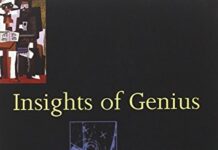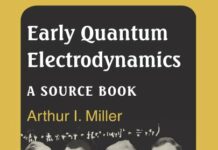
Ebook Info
- Published: 1998
- Number of pages: 466 pages
- Format: PDF
- File Size: 24.30 MB
- Authors: Arthur I. Miller
Description
An analysis of one of the three great papers Einstein published in 1905, each of which was to alter forever the field it dealt with. The second of these papers, “On the Electrodynamics of Moving Bodies”, established what Einstein sometimes referred to as the “so-called Theory of Relativity”. Miller uses the paper to provide a window on the intense intellectual struggles of physicists in the first decade of the 20th century: the interplay between physical theory and empirical data; the fiercely held notions that could not be articulated clearly or verified experimentally; the great intellectual investment in existing theories, data, and interpretations – and associated intellectual inertia – and the drive to the long-sought-for unification of the sciences. Since its original publication, this book has become a standard reference and sourcebook for the history and philosophy of science; however, it can equally well serve as a text on twentieth-century philosophy.
User’s Reviews
Editorial Reviews: Review From reviews of the previous edition: “Miller has written a superb, perhaps definitive, historical study of Einsteins special theory of relativity…. One comes away from the book with a respect for both the creative genius of the man and his nerve: he simply brushed aside much of the work that was going on around him.” – The New Yorker From the Back Cover This book analyzes one of the three great papers Einstein published in 1905, each of which would alter forever the field it dealt with.
Reviews from Amazon users which were colected at the time this book was published on the website:
⭐If you come to this book looking for mere “philosophy,” you have come to the wrong place. If you come to Arthur Miller’s book searching for historical antecedents to Albert Einstein’s 1905 special relativity paper, then you have found a fine resource (in many respects unique). Before grappling with what Arthur Miller has written, you should be comfortable with undergraduate-level electromagnetism and vector calculus (modern view of special relativity is an asset, but not necessary for understanding).(1) Begin not at the beginning, but the end, where the reader is reminded that “It has taken a great deal of work by modern historians of science to straighten-out Blumenthal’s ‘history’ that made it appear that the Michelson-Morley experiment was a prerequisite for Einstein’s publication on special relativity.Miller refers to the Dover volume, edited by Blumenthal, The Principle of Relativity (pages 91 and 369).(2) If you are unaware, note that Max Planck’s “enthusiasm over the principle of least action was rooted in its invariance under the principle of relativity.” (page 341). Planck features prominently in this story.(3) Hermann Minkowski: “demonstrated that in a space-time description of the ‘Lorentz-Einstein’ theory, the Lorentz force and energy conservation law for electromagnetism could be joined into a single equation.” Max von Laue (Max Planck’s student) carries Minkowski’s analysis further (pages 346-353).(4) Miller’s chapter 11, Light Quanta, Radiation and Relativity, is replete with marvelous commentary, this as we uncover analysis (section 8 of Einstein’s paper) showing the ratio of energy to frequency in a light pulse is a constant in every inertial system (that is, Planck’s constant, page 293).(5) A footnote (#26, page 254) quotes Albert Einstein (June 1916): “…the general relativity theory admits of an ether hypothesis as does the special theory of relativity. But this new ether theory would not violate the principle of relativity…” In 1922, Einstein also spoke of how the geometrical structure of space-time could be considered as playing the role of an ether. I opine: the word–ether–should be banished forever.(6) Read: “Poincare’s epistemology was rooted in sense perceptions.” (page 174) and “Poincare offered several reasons for the necessity of an ether.” (page 156). Read: “Einstein often emphasized special relativity’s continuity with Newtonian mechanics.” (page 163).(7) In 1919, Einstein stated “the phenomenon of electromagnetic induction forced me to postulate the relativity principle.” (page 153). The reader will re-examine the technicalities of that statement in Miller’s lucid section #3.2, The Case of the Magnet and Conductor (page 138-142).(8) There is a lengthy interesting footnote (#15, page 130) regarding Mach’s Principle as Mach explains it. Reference is made to Steven Weinberg’s 1972 Gravitation and Cosmology book for more. A later resource is Ciufolini and Wheeler’s book, Gravitation and Inertia (1995, Princeton). Note: I prefer Weinberg.(9) Thomson’s 1897 experiment and analysis of the physics of that experiment are presented in a lengthy footnote. The footnote is one that an undergraduate student should study (pages 96-99).(10) Miller: “We should take Einstein at his own word that the Michelson-Morley experiment had “at most an indirect effect” on his thinking toward the special relativity theory.” (page 85). Miller contrasts sharply with Abraham Pais, who writes: “Why this need (by Einstein) not to remember, or, at best, to underplay its influence ? ” (page 172, Subtle is the Lord).(11) In conclusion: If you have read Abraham Pais’ biography, The Science and The Life of Albert Einstein, you will want to dig deeper into special relativity with Miller’s resource. Try, if you dare, to disentangle the thought processes of Lorentz, Poincare and Einstein. This book traces their thought from the years 1890 to 1911. While you get some “philosophy” here, more often you get history and physics of that period.
⭐A full blown hurricane of Special Relativity treatment. Mathematical, Physical and Philosophical. Has all the ingredients of a encyclopedia for Relativity
⭐must for the philosopher and historian of science, traces the history and debates in a concise yet comprehensive way- will surely serve as a wonderful resource for further forays.
Keywords
Free Download Albert Einstein’s Special Theory of Relativity: Emergence (1905) and Early Interpretation (1905–1911) 1998th Edition in PDF format
Albert Einstein’s Special Theory of Relativity: Emergence (1905) and Early Interpretation (1905–1911) 1998th Edition PDF Free Download
Download Albert Einstein’s Special Theory of Relativity: Emergence (1905) and Early Interpretation (1905–1911) 1998th Edition 1998 PDF Free
Albert Einstein’s Special Theory of Relativity: Emergence (1905) and Early Interpretation (1905–1911) 1998th Edition 1998 PDF Free Download
Download Albert Einstein’s Special Theory of Relativity: Emergence (1905) and Early Interpretation (1905–1911) 1998th Edition PDF
Free Download Ebook Albert Einstein’s Special Theory of Relativity: Emergence (1905) and Early Interpretation (1905–1911) 1998th Edition



